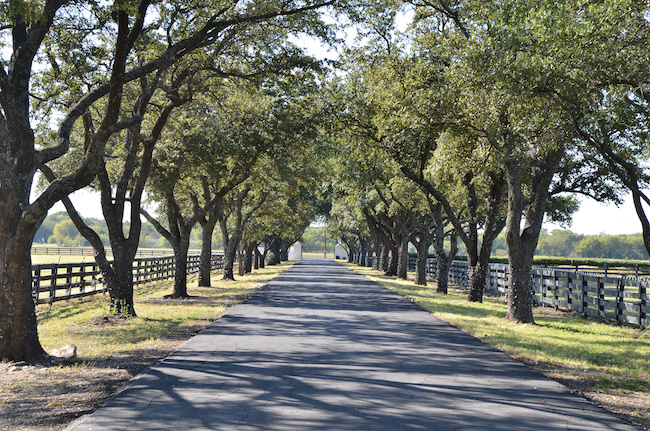Hedges are ideal for defining property lines, and driveways and for providing privacy. Unlike fences, they don’t require a lot of upkeep and maintenance. The only thing that you need to do to keep them looking great is to trim them periodically as otherwise, they will start to eat your drive space. As long as you don’t allow them to get overgrown, the actual process of trimming them is quick and easy – primarily if you invest in a high-quality hedge trimmer. All types of hedges including Leylandii hedges need to be pruned annually.
There is no need to trim your Leylandii hedge more than once or twice a year. Although you may sometimes hear people recommend cutting it more often than that, trimming a hedge too often can cause the hedge to become weaker – particularly if it is already experiencing stress from severe weather or drought. To stay healthy, the hedge has to have a chance to create new growth before spring rolls around. If hedges are trimmed too often, they won’t be able to do this and are more likely to experience problems. At the same time, however, it is essential to make sure that you are trimming your hedge often enough. Leylandii hedges can grow as much as 3 feet in a single year. If you allow them to get too tall, you won’t be able to trim them on your own. Ideally, you should try to keep your hedge from growing any taller than six or eight feet. If it gets much taller than that, it will be challenging to trim on your own.
As a general rule of thumb, all of our hedges are pruned annually. Some of the hedges that we have on our property are as tall as 12 feet. For these taller hedges, we rely on the Henchman Hi-Step platform to make trimming easier. One of the best parts about the hedges is that they act as a beautiful windbreak, protecting the polytunnels that we have on our property. When you trim back the hedge, always try to leave at least three or four inches of green foliage. If you trim the hedge back too much to the point that you reach the brown wood, the hedge is much more likely to experience problems if it is exposed to stress. For instance, if the weather gets extremely hot or if you experience a drought, the hedge may become scorched without adequate foliage to protect it.
Try to be consistent each year regarding the width and height that you choose for your hedge. This will help it maintain the same size from year-to-year. Ideally, the base of the hedge should be more extensive than the top of the hedge. The best time to trim a Leylandii hedge is in the summer or the spring. If you cut it during the middle of the winter or late in the fall, it won’t have a chance to add new growth before cold temperatures hit. At the same time, however, you should avoid trimming it if you are going to be experiencing weather that is extremely hot and dry. Trimming in the autumn may also increase the likelihood of developing problems with Cypress aphids during the winter. When trimming in the spring, be sure to keep your eyes out for nests so that you don’t accidentally break the law by disturbing them.
Concerning the tools that you need to trim the hedge, you can either use cutting shears or a high-quality hedge trimmer. A lot of people use chainsaws – petrol or battery both work. Whatever tool you use, check that the blades are incredibly sharp so that they don’t tear the branches off. Always remove any branches that have been trimmed off from the top of the hedge rather than allowing them to sit there and rot.
It is essential to get your neighbors involved when planting a hedge. After all, the hedge will affect their land as well if it is planted on the property boundary. When you are getting ready to plant the hedge, talk to your neighbor about the type of hedge you are putting in and the kind of care that it will need. Find out their thoughts on trimming the hedge. If necessary, you may need to handle the trimming on their side for them.
In fact, the law stipulates that the owner of the hedge is responsible for its maintenance. That means that if your hedge grows too tall or if it starts encroaching on your neighbor’s property, they may be able to take legal action against you. Likewise, if your hedge causes any damage to your neighbor’s property, you will most likely be held responsible for the related expenses.






